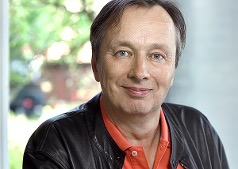

Nov 2025

Abstract:
Complex biological systems, from gene-regulatory circuits to neural networks, often exhibit surprisingly reliable computation despite their noisy components. While the specific elements such as genes, biochemical interactions, or neurons play key roles, some emergent properties arise directly from the underlying network architecture. In this talk, I will demonstrate how Boolean networks, or networks of switches, can be used for studying these architectural principles. The main idea is to keep the architecture of a network, while simplifying the dynamical state of the nodes of a network to simple ON/OFF states. Primarily, I will focus on genetic regulation: Boolean network models demonstrate how network topology fosters reliability in noisy environments,with stable attractors that resist fluctuations. Strikingly, they can serve as precise dynamical blueprints for real cellular circuits, for instance, faithfully reproducing the full cell-cycle sequence in fission yeast and predicting phenotypes for nearly all knockout mutants based solely on connectivity. By adding noise to Boolean networks we will further explore reliability of network architectures that occur in nature. Motivated by the recently observed scaling in neural avalanches, I will briefly discuss how Boolean-like networks provide minimal mechanisms for emerging criticality, characterized by power-law scaling in their avalanche statistics, as observed in neocortical recordings. In these models, balanced excitation–inhibition naturally arises, suggesting speculative parallels to neural self-regulation. Overall, Boolean networks stand out as an accessible formalism that bridges molecular fidelity with computational richness, inviting exploration across biology and AI.
Bio:
Stefan Bornholdt is Professor of Theoretical Physics at University of Bremen in Germany. He uses methods from theoretical physics to study origin, dynamics, and function of complex systems from diverse disciplines from biological networks as gene regulation networks and neural networks, to social networks and socio-economic systems, where collective phenomena in human society are approached from a statistical physics and dynamical systems perspective.